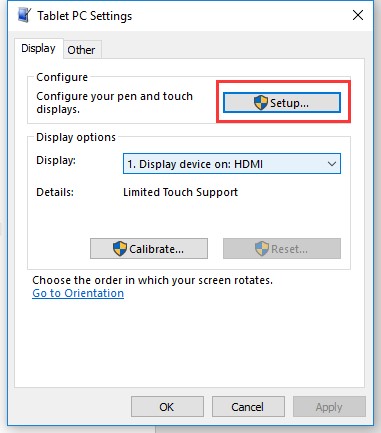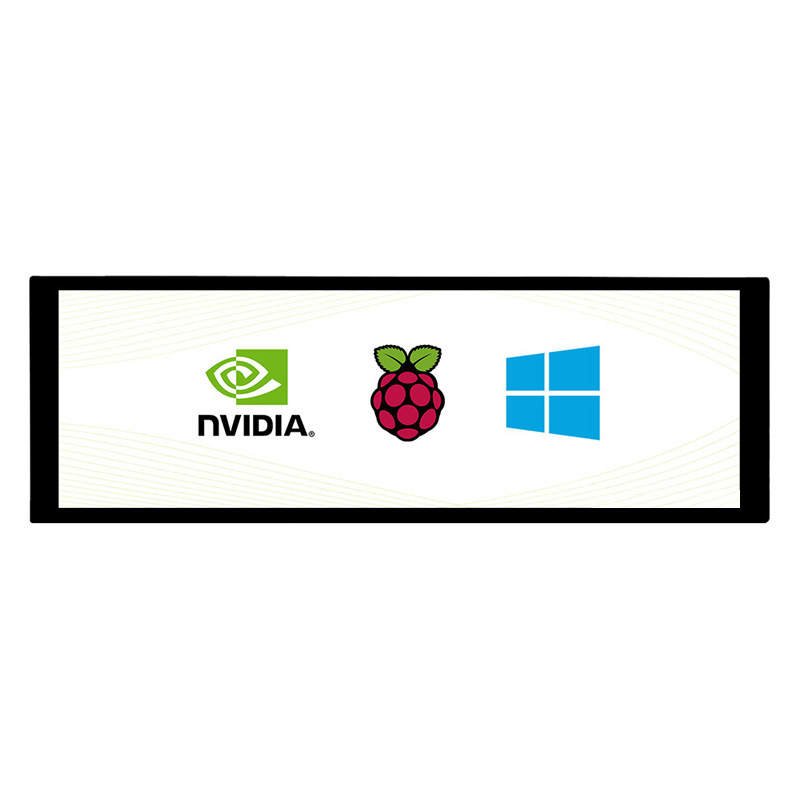- sales/support
Google Chat: zj734465502@gmail.com
- sales
+86-0755-88291180
- sales01
sales@spotpear.com
- sales02
dragon_manager@163.com
- support
tech-support@spotpear.com
- CEO-Complaints
zhoujie@spotpear.com
- sales/support
WhatsApp:13246739196
Raspberry Pi 7.9inch HDMI LCD User Guide
Introduction
This is a 7.9inch Capacitive Touch Screen LCD, IPS panel with 400×1280 resolution, has toughened glass cover. HDMI/USB interfaces.
Features
- 7.9inch IPS screen, 400x1280 resolution.
- Toughened glass capacitive touch panel
- Supports popular mini PC such as Raspberry Pi, Jetson Nano
- Used with Raspberry Pi, supports Raspbian, Ubuntu, WIN 10 IOT, single touch and driver free
- Touch orientation is adjustable with button
Working with PC
This product supports Windows 10/8.1/8/7 OS.:
1. Connect the TOUCH interface of LCD to the USB interface of PC . Waiting for a moment, The touch will be recognized by Windows automatically
2. Connect the HDMI interface of LCD to the HDMI port of PC. About 5s later, you can see that the LCD display properly.
Note:
1) If multi-screens are connected to one PC at the same time, you can only control the cursor by this LCD, so please set the LCD as main screen.
2) Some of PC cannot support HDMI screen Hot Plug . In this case, restart the PC can solve.
3) Sometimes LCD will flicker because of undersupplying from USB cable of PC. You need to connect an external power supply (5V/2A) to DC port.
Orientation setting
- Display orientation
- You can adjust the display orientation by display setting.
- Touch orientation
- The physical button on the backside can be used to adjust the orientation of touch. You can hold it for 5s to change.
- You may need to test multi times for the correct orientation.
Touch Settings on Win 10 PC
Some users want to connect more than one display to their PC. Here we talk about how to setting the touch to make the touchscreen to control its screen separately.
- Connect touchscreen to PC. Here we use an standard PC monitor and connect an 7inch HDMI LCD (C) for example. We make the monitor as main screen and the touchscreen as secondary screen.
- By default,The touchscreen can only control cursor on the main screen. Here we set it to control the secondary screen
- Open Control Panel and search Tablet PC setting on the control panel and open the tool

- Click button "Setup..." to setting the touchscreen

- After click the setup you can find that there is prompt on your first screen with white color background and other screens are white.

- If we want the touch of the touchscreen to control the desktop of the touchscreen itself. Just press Enter key to pass the first screen. And the second screen, when you find that the black text is displayed on the touchscreen, just touch the center of the touchscreen to finish this setting.
- After this setting, the touch on the screen will just control this touchscreen even thought it is not the main screen.
Note:
1 If the first screen and the second screen are touchscreen as well, you can touch them when the text is displayed on the screens. Then you can find that all the touchscreen can work.
2 This method is just tested on win 10 PC.
Working with Raspberry Pi
Supports Raspbian/Ubuntu mate/Windows 10 IoT Core
When working with Raspberry Pi, you should set the resolution of the LCD by yourself, or else the LCD screen will not work. For more detailed information, please read the following section.
Download the Raspbian image from Raspberry Pi web site. Write the image to a TF card and append the following lines to the config.txt file which is located in the root of your TF card:
max_usb_current=1 hdmi_group=2 hdmi_mode=87 hdmi_timings=400 0 100 10 140 1280 10 20 20 2 0 0 0 60 0 43000000 3
If you use the LCD with Raspberry Pi 4B, you need to remove line dtoverlay=vc4-fkms-V3D from config.txt file
You must make sure that there are no spaces on either side of the equal sign.
Connect the Touch interface of LCD to USB port of Raspberry Pi
Connect the HDMI interface of LCD to HDMI port of Raspberry Pi
Save and connect the TF card to your Pi then power up.
Note:
- Resolution of Ubuntu Mate OS or Windows 10 IoT Core OS can also be set properly by editing config.txt.
- For Pi Zero / Zero W: if you've used an SD card on a Pi 3 and then attached the card to the Pi Zero, the touch screen often doesn't work. In such cases, you have to write a fresh system image to the SD card. The first boot up must be done on the Pi Zero but not Pi 3, due to initialization for a corresponding device.
Orientation setting
- Display orientation
- To change the orientation, you can add the following line to config.txt file and reboot.
display_rotate=X
- X can be 1: 90°; 2: 180°C; 3: 270°
- For example, if you want to rotate it for 90 degree, you can add the lin display_rotate=1
- Touch orientation
- The physical button on the backside can be used to adjust the orientation of touch. You can hold it for 5s to change.
- You may need to test multi times for the correct orientation.
Working with Jetson Nano
To work with Jetson Nano Developer Kit, you just need to connect the LCD and power on
- Connect the Touch interface of the LCD to the USB port of Jetson Nano
- Connect the HDMI interface of the LCD to HDMI port of Jetson Nano
- Power on the Jetson Nano and the LCD can display after several seconds.
Orientation setting
- Display orientation
- You can chagne the display orientation by display setting (system setting -> display setting).
- Touch orientation
- The physical button on the backside can be used to adjust the orientation of touch. You can hold it for 5s to change.
- You may need to test multi times for the correct orientation.
Keys Introduction
- On/OFF: Turn on/off backlight
- Rotate Touch: Hold it for 5s to change the touch orientation





